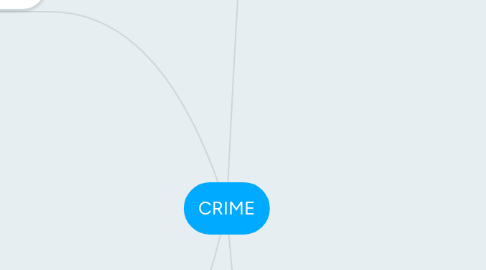
1. THE CRIMINAL INVESTIGATION PROCESS
1.1. POLICE POWERS
1.2. REPORTING CRIME
1.3. INVESTIGAITNG CRIME
1.3.1. GATHERING EVIDENCE
1.3.2. USE OF TECHNOLOGY
1.3.3. SEARCH AND SEIZURE
1.3.4. USE OF WARRANTS
1.4. ARREST AND CHARGE
1.5. SUMMONS
1.6. WARRANTS
1.7. BAIL AND REMAND
1.8. DETENTION AND INTERROGATION
1.9. RIGHTS OF THE SUSPECT
2. CRIMINAL TRIAL PROCESS
2.1. COURT JURISDICTION
2.2. THE ADVERSARY SYSTEM
2.3. LEGAL PERSONNEL: MAGISTRATE
2.3.1. MAGISTRATE
2.3.2. JUDGE
2.3.3. POLICE PROSECUTOR
2.3.4. DIRECTOR OF PUBLIC PROSECUTION
2.3.5. PUBLIC OFFENDERES
2.4. PLEAS
2.5. CHARGE NEGOTIATION
2.6. LEGAL REPRESENTATION
2.6.1. LEGAL AID
2.7. BURDEN AND STANDARD OF PROOF
2.8. USE OF EVIDENCE, INCLUDIGN WITNESSES
2.9. DEFENCES TO CRIMINAL CHARGERS
2.9.1. COMPLETE DEFENCES
2.9.2. PARTIAL DEFENCES TO MURDER
2.10. ROLE OF JURIES, INCLUDING VERDICTS
3. THE NATURE OF CRIME
3.1. Crime is a broad term used to describe many unlawful activities from the extreme such as murder to more minor offences, such as speeding.
3.2. STRICT LIABILITY OFFENCES
3.2.1. Defined as those where the prosecution only needs to prove the element of actus rea (the accused accrued out the act) not mens rea and causation as well. E.g. nearly all traffic offences are strict liability.
3.3. ELEMENTS OF CRIME
3.3.1. ACTUS REUS- that the accused committed an act. MENS REA- that the accused held and intention to act – had a guilty mind or had reckless indifference to human life this does not apply to manslaughter
3.4. CAUSATION
3.4.1. Causation is often in use in a criminal case. it is the relationship between cause and effect. casualty
3.5. CATEGORIES OF CRIME
3.5.1. OFFENCE AGAINST THE PERESON
3.5.2. OFFENCES AGAINST THE SOVERIGN/STATE
3.5.2.1. Involve criminal acts against the government for example, treason, sedition
3.5.3. ECONOMIC OFFENCES
3.5.3.1. Inolve the infliction of economic loss upon the victim by for example, loss or damage to the victims property e.g. robbery, larceny. computer offences such as hacking, internet privacy etc. white collar crime like the embezzlement or tax evasion
3.5.4. DRUG OFFENCES
3.5.4.1. involve the use, supply and possession of prohibited drugs. most offences are covered in the Drug Misuse and trafficking Act 1985 (NSW)
3.5.5. DRIVING OFFENCES
3.5.6. PUBLIC ORDER OFFENCES
3.5.6.1. involves acts which the "reasonable person" would deem unacceptable behaviour. such offences include using offences language (in public), indecent behaviour (being nude in public) and prosecution.
3.5.7. PRELIMINARY CRIMES
3.5.7.1. Involves attempting to or planning to commit a crime, both of which are criminal acts for example, attempted break and enter and steal, loitering with intent.
3.6. SUMMARY AND INDICTABLE OFFENCES
3.6.1. INDICTABLE OFFENCES are minor offences which represent the most common type of offense
3.6.2. SUMMARY OFFENCES are more serious and complex
3.7. PARTIES TO A CRIME
3.7.1. PRINCIPAL IN THE FIRST DEGREE
3.7.1.1. This person/s is directly responsible for the criminal act
3.7.2. PRINCIPAL IN THE SECOND DEGREE
3.7.2.1. this person basically assisted the principal in the first degree to commit the crime
3.7.3. ACCESSORY BEFORE THE ACT
3.7.3.1. the individual/s who help to plan the crime
3.7.4. ACCESSORY AFTER THE ACT
3.7.4.1. The person that helps the offender after the crime has been committed
3.8. FACTOR AFFECTIGN CRIMINAL BEHAVIOUR
3.8.1. Psychological
3.8.1.1. mental issues that affect a person behaviour
3.8.2. Social
3.8.2.1. attitude to the law and authority of the state are shaped in part of the society they live in
3.8.3. ECONOMIC
3.8.3.1. Those who suffer economic disadvantages may disconnected and have less respect for the law
3.8.4. GENETIC
3.8.4.1. A controversial theory.
3.8.5. POLITICAL
3.8.5.1. Individuals and organisations may oppose certain criminal laws.
3.9. CRIME PREVENTION
3.9.1. SITUATIONAL CRIME PREVENTION
3.9.1.1. Primary focusing on physical scene of the crime
3.9.2. SOCIAL CRIME PREVENTION
3.9.2.1. Aims to break the cycle of crime by targeting social factors such as poor parenting, high truancy rates, low levels of education and economic disadvantages.
4. SENTENCING AND PUNISHMENT
4.1. STATUTORY AND JUDICIAL GUIDELINES
4.2. THE PURPOSES OF PUNISHMENT
4.2.1. DETERRENCE (SPECIFIC AND GENERAL)
4.2.2. RETRIBUTION
4.2.3. REHABILITIATION
4.2.4. INCAPACITATION
4.3. FACTORS AFFECTING A SENTENCING DECISION
4.3.1. AGGRAVATING AND MITIGATING CIRCUMSTANCES
4.4. THE ROLE OF VICTIM IN SENTENCING
4.5. APPEALS
4.6. TYPES OF PENALTIES
4.6.1. NO CONVICTION RECORDED
4.6.2. CAUTION
4.6.3. FINE
4.6.4. BOND
4.6.5. SUSPENDED SENTENCE
4.6.6. CAUTION
4.6.7. FINE
4.6.8. BOND
4.6.9. SUSPENDED SENTENCING
4.6.10. PROBATION
4.6.11. CRIMINAL INFRINGEMENT NOTICE
4.6.12. PENALTY UNITS
4.6.13. COMMUNITY SERVICE ORDER
4.6.14. HOME DETENTION
4.6.15. PERIODIC DETENTION
4.6.16. FORFEITURE OF ASSETS
4.6.17. IMPRISONMENT
4.6.18. DIVERSIONARY PROGRAMS
